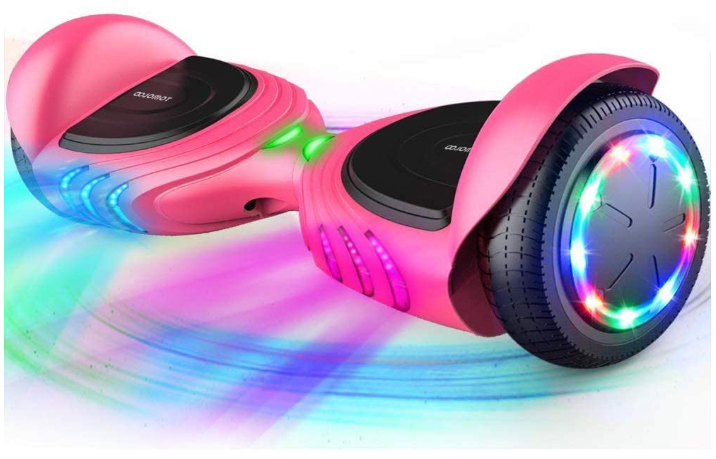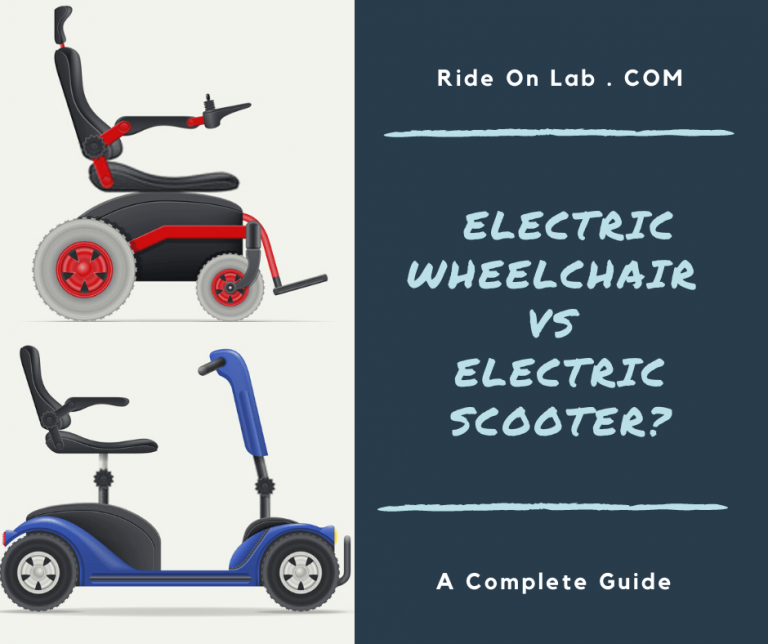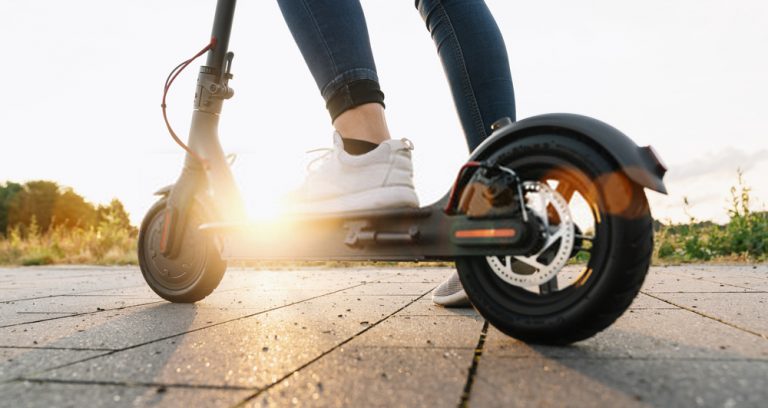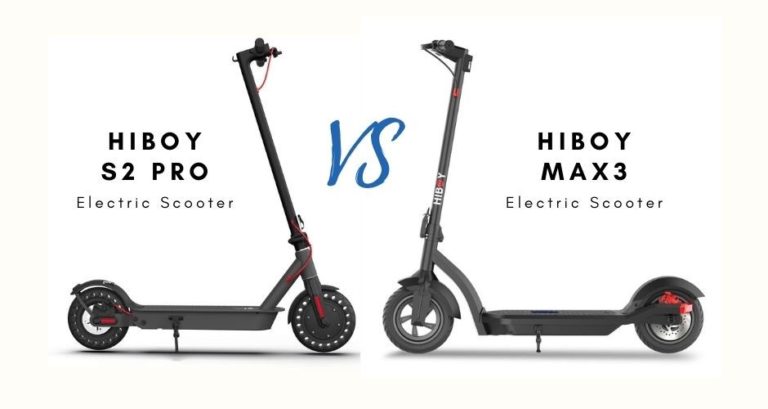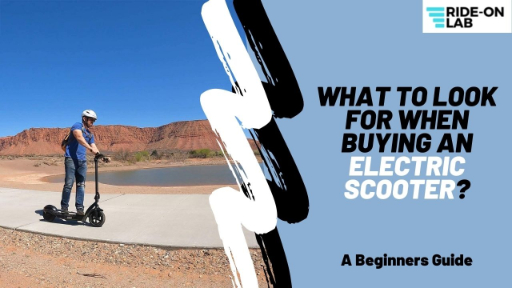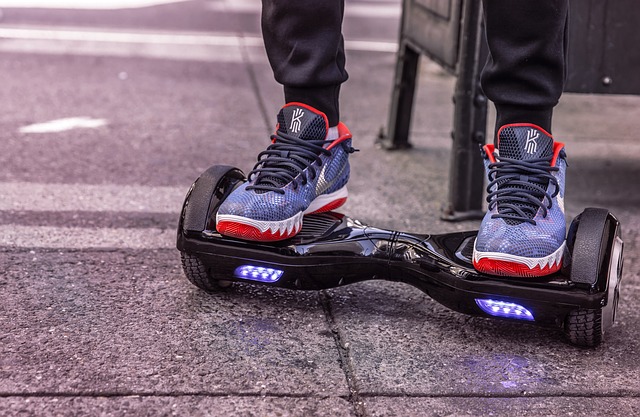9 Best Electric Scooters For Hills in 2024
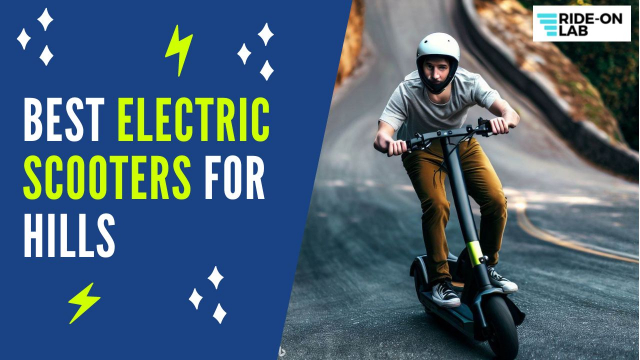
If you love riding electric scooters, you know how challenging it can be to find one that can handle hills.
Many electric scooters need more power, speed, and battery life to climb steep slopes and keep you going for long distances.
But don’t worry! We’ve got you covered!
We have spent 60+ hours analyzing 30+ electric scooters and scraping down 1000+ reviews from experts, testers and buyers on multiple sources, including blogs, Youtube videos, Reddit posts, and e-Commerce platforms, to shortlist the 9 best electric scooters for climbing hills.
These e scooters are designed for the best performance, comfort, and safety on any terrain.
You’ll learn about their features, benefits, drawbacks, and prices. Plus, we’ll share some stories from real users who have tested these scooters on hilly roads.
So sit back and enjoy the ride!
Contents
- 1 Note
- 2 List of Best E Scooters for Hills
- 3 Top 9 Hill Climbing Electric Scooters
- 3.1 1) Kaabo WOLF KING GT PRO [Fastest Electric Scooter for Climbing Hills]
- 3.2 2) Kaabo Wolf Warrior 11 Pro [Best Dual Motor Electric Scooter for Going Up Hills]
- 3.3 3) Dualtron Thunder 2 Electric Scooter [Powerful Electric Scooter for Going Up Hills]
- 3.4 4) NANROBOT D6+ Commuter Electric Scooter [Best Electric Scooter for Hills on Amazon]
- 3.5 5) Kaabo Mantis King GT Electric Scooter [Best Electric Scooter for Hills for Daily Commuting]
- 3.6 6) UberScoot 1600W Electric Scooter [Best e-Scooter for Hills with Seat]
- 3.7 7) Segway SuperScooter GT2 Electric Scooter [Smartest Electric Scooter for Hill Climbing]
- 3.8 8) NIU KQi3 Max Electric Scooter [Lightweight Electric Scooter for Hills]
- 3.9 9) Segway Ninebot MAX Electric Kick Scooter [Portable Electric Scooter for Hills]
- 4 How to Choose an Electric Scooter for Climbing Hills?
- 5 Conclusion
- 6 FAQs
Note
These products were selected and ranked based on hill climbing ability and customer reviews collected from different platforms. It is because we believe that reviews collected from customer worldwide, with real-time experience with the product, are much more beneficial than reviews from couple of experts!
List of Best E Scooters for Hills
| Image | Title | Climbing Angle | Notable Features | Check Price |
|---|---|---|---|---|

|
Kaabo Wolf King GT Pro Electric Scooter | 50 degrees (125%) |
|
Check Price on VoroMotors |

|
Kaabo Wolf Warrior 11 Pro Electric Scooter | 45 degrees (100%) |
|
|

|
Dualtron Thunder 2 Electric Scooter | 35 degrees (71%) |
|
Check Price on VoroMotors |

|
NANROBOT Scooter D6 Electric Scooter | 32 degrees (62.5%) |
|
|

|
Kaabo Mantis King GT Electric Scooter | 30 degrees (61%) |
|
Check Price on VoroMotors |

|
UberScoot 1600W Electric Scooter | 30 degrees (61%) |
|
|

|
Segway SuperScooter GT2P Electric Scooter | 16.7 degrees (30%) |
|
|

|
NIU KQi3 Max Electric Scooter | 14 degrees (25%) |
|
Check Price on Amazon |

|
Segway Ninebot MAX G30P Electric Kick Scooter | 11.3 degrees (20%) |
|
Top 9 Hill Climbing Electric Scooters
1) Kaabo WOLF KING GT PRO [Fastest Electric Scooter for Climbing Hills]
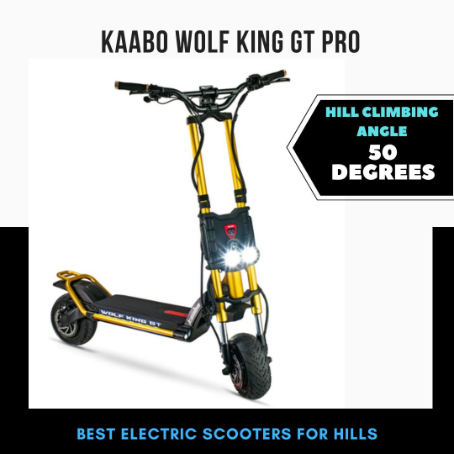
| Hill Incline: 50 degrees | Motor: 2000W x2 | Battery: 72V 35Ah Samsung/LG battery |
| Max. Speed: 50 to 62 mph | Max. Range: 55 to 112 miles | Max. Load: 330 lbs (150 kg) |
| Acceleration (0 to 15 mph): 1.8 seconds | Throttle: thumb throttle | Cruise Control: Yes |
| Charging Time: 7 to 11.6 hours | Dimensions (unfolded): 49.6 x 29.5 x 51.1 inches | Deck Size: 20.3 x 9 inches |
| Tires: 11-inch flat-proof vacuum off-road/street tires | Dimensions (folded): 49.6 x 29.5 x 18.9 inches | Ground Clearance: 6.3 inches |
| Suspension: Dual hydraulic suspension system | Brakes: Front and rear hydraulic brakes +ABS | Drive: Front and rear wheel drive (Dual Motor) |
| Weight: 115 lbs (52 kg) | Lights: headlight, taillight, turn signals, and deck light | Water Resistance: IPX5 |
| Deck-to-handlebar height: 40 inches (approx.) | App Support: No | Display: 4.2″ TFT-display |
If you’re looking for the ultimate beast of electric scooters, look no further than the Kaabo WOLF KING GT PRO.
This scooter can climb hills up to 50 degrees, making it among the market’s fastest, most powerful, and most versatile scooters.
The WOLF KING GT PRO has a dual 2000W motor that can reach up to 62 mph (100 km/h) speed and a 72V 35Ah Samsung/LG battery that can last up to 112 miles (180 km) on a single charge (on optimal conditions, with 75 kg payload, and constant 25 km/h).
Whereas, it can last around 55 miles in normal conditions, which is still one of the best electric scooter ranges.
It has a dual hydraulic suspension system, 11-inch vacuum off-road tires (you can also opt for street tires), front and rear hydraulic disc brakes, and a bright LED headlight.
This ride is not only fast and furious but also comfortable and safe to ride.
But what sets the WOLF KING GT PRO apart from other electric scooters on the market?
It’s the attention to detail and the emphasis on rider comfort.
The high-quality suspension system, featuring front hydraulic and rear C-Spring shock absorbers, provides a smooth and comfortable ride, even on bumpy terrain.
The deck is also spacious, allowing for a more comfortable ride for riders of all sizes.
Additionally, the sleek and stylish design will turn heads and make a statement wherever you go.
Of course, no product is perfect, and the WOLF KING GT PRO is no exception.
This hill-climbing scooter is not for the faint of heart. It is extremely fast and weighs a whopping 115 lbs (52 kg), making it hard to carry or store.
It also costs around hefty $3,500, which is not affordable for some. Plus, riding in some areas may not be legal due to its high speed and power.
Moreover, it is too heavy to carry it upstairs, and too big to fit it into a regular car trunk. You will be needing an SUV or a truck for its transportation.
However, the WOLF KING GT PRO is best suited for experienced riders who want to conquer any terrain and challenge themselves with extreme hill climbing. If you’re one of them, you’ll love this scooter’s thrill and adrenaline.
Other notable features:
- Waterproofing rating of IPX5
- 110° turning angle
- 29 inches wide handlebars
- Thumb throttle
- TFT screen display with speedometer and tons of other features.
- Features sinewave controller, which makes the scooter fully quiet and offers precise speed control, and smooth acceleration, especially during hill climbing.
- Dual headlights, taillight, and aesthetic deck light, along with turn signals
- Excellent 160 mm front and rear full hydraulic disc brakes and ABS
- Adjustable brakes and torque parameters in each speed mode
- 11-inch flat-proof vacuum tires (you can choose between off-road and street tires)
Pros:
- Works excellent on steep hills and inclines, as well as on streets, off-roads, and bike trails
- Offers incredible speed, acceleration, range, throttle control, and stability at high-speed
- Amazing built-quality, comfortable ergonomics, ultra-bright lights, and reliable brakes
- Extremely quiet and cool compared to other high-range off-road scooters
- Expert tester GingerOnWheels got 60 mph of top speed on this beast, proving this ride can reach nearly its advertised speed.
- It comes with one of the best TFT displays, a lighting system, and the most reliable braking system.
- It has a weight carrying capacity of 330 lbs., making it one of the best electric scooters for heavy riders.
Cons:
- Some users have reported that the scooter is heavy and difficult to carry or transport.
- This scooter is longer when folded, so it is difficult to fit it in most car trunks.
- Due to high-motor power, the front wheel burns out and wears out on dual motor mode, which can be dangerous for beginners to handle.
- Not fully waterproof but water-resistant.
- Takes some time to get comfortable with a push-thumb throttle.
- Many users confirmed that this ride accelerates strangely instead of decelerating or maintaining speed, leaving the throttle after it was on auto-cruise control. However, manual cruise control works fine.
- Lacks traction control posing a risk of slipping.
- Takes about 11.6 hours to charge fully. However, charging time can be reduced to 7 hours by connecting 2 chargers.
2) Kaabo Wolf Warrior 11 Pro [Best Dual Motor Electric Scooter for Going Up Hills]
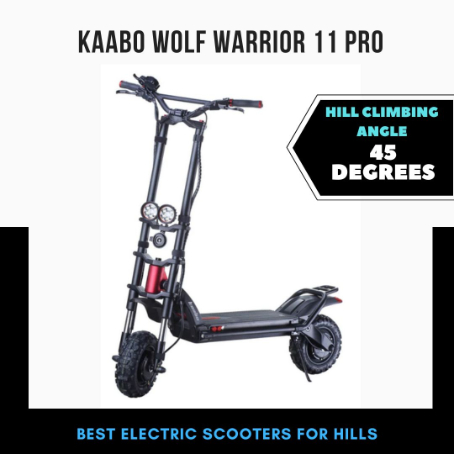
| Hill Incline: 45 degrees | Motor: 1200W x2 | Battery: 60V 35Ah 2100Wh (LLG MJ1/Samsung35E) Li-lon battery |
| Speed: 50 mph (80 km/h) | Range: 40 miles (regular), 90 miles on Eco mode | Max. Load: 330 lbs (150 kg) |
| Acceleration (0 to 15 mph): 1.9 seconds | Throttle: Trigger | Cruise Control: Yes |
| Charging Time: 4 to 17 hours | Dimensions (unfolded): 49.2 x 24.6 x 49.2 inches | Deck Size: 20.5 x 9 inches of standing room |
| Tires: 11-inch air-filled off-road/street tires | Dimensions (folded): 59 x 26 x 19 inches | Ground Clearance: 8 inches |
| Suspension: Dual hydraulic (front) and dual spring shock absorbers (rear) | Brakes: Front and rear hydraulic disc brake +EABS | Drive: Front and rear wheel drive (Dual Motor) |
| Weight: 104 lbs (47 kg) | Lights: LED headlights, taillight, sidelight and turn signals | Water Resistance: IPX4 |
| Deck-to-handlebar height: 38 inches | App Support: No | Display: EY3 Minimotors display |
Are you looking for a cheaper alternative to Kaboo Wolf King GT Pro? If so, you need a scooter that can equally handle most inclines with ease and power.
We recommend the Kaabo Wolf Warrior 11 Pro, another best electric scooters for climbing hills.
The Kaabo Wolf Warrior 11 is different from your average electric scooter. It’s a beast that can tackle any terrain, from smooth roads to rough trails.
It has dual 1200W motors (made by MiniMotors. the same used in the Dualtron Thunder) that can produce up to 5400W of peak power, giving it a top speed of 50 mph (80 km/h) and a climbing angle of 45 degrees. It also has insane acceleration and can go from 0 to 15 mph in merely 1.9 seconds.
It also has a long-lasting 60V 35Ah 2100Wh (LLG MJ1/Samsung35E) Li-lon battery pack with BMS, delivering a maximum range of 93 miles on eco mode (and around 40 miles with regular daily-life commuting). So, you don’t have to worry about charging even after a long trip.
But what makes this scooter the best for hill climbing? Well, several factors contribute to its outstanding performance on slopes.
First, it has high torque, allowing it to accelerate quickly and maintain speed on steep hills.
Second, a hydraulic suspension system absorbs shock and vibration, ensuring a smooth and comfortable ride.
Third, it has dual hydraulic disc brakes with an ABS system that provides reliable and safe braking on downhill rides.
The Kaabo Wolf Warrior 11 also boasts a rugged, durable design that can withstand any challenge. It has a heavy-duty frame, 11-inch off-road tires, LED headlights, and fenders.
It also has a foldable design, making it easy to transport and store. With this scooter, you can enjoy the thrill of riding in the wild without compromising quality or convenience.
Of course, no scooter is perfect, and the Kaabo Wolf Warrior 11 has some drawbacks as well.
For one thing, it’s not cheap. It costs around $2,500, which is quite expensive for an electric scooter.
For another thing, it’s not very lightweight. It weighs 104 pounds (47 kgs), which is difficult to carry around or lift upstairs single-handedly.
Finally, it takes a long time to charge. It can take up to 17 hours to fully charge with the standard charger, so you should invest in a fast charger if you need quicker charging, or you can use two chargers simultaneously to significantly reduce the charging time.
Overall, the Kaabo Wolf Warrior 11 is an incredible electric scooter for climbing hills and for riding in general.
It offers incredible power, speed, range, and stability on any terrain. It’s also durable, reliable, and versatile.
If you’re looking for a scooter that can handle any challenge and give you an exhilarating ride experience, this is the one for you.
Note: Kaboo Warrior 11 is available in different variant, such as Kaboo Warrior 11 Plus, Warrior 11 Pro, and Wolf Warrior GT Pro. Each of them have minor differences, including batteries, range and item weight. This might confuse you, so you must check with the seller/manufacturer, what exactly you are buying!
Other notable features:
- Front dual hydraulic and rear dual C-type spring shock absorbers
- Weight carrying capacity: 330 lbs.
- Loud Horn, and ultra-bright dual headlights, taillight, and side-deck light with ground effect
- Adjustable handlebar
- IPX4 water resistant
- Comes with an option of knobby off-road air-filled tires or treaded tires for street riding.
- Features EY3 LCD throttle that displays trip, mode, battery, speed, and odometer.
Pros:
- As per hill climbing tests performed by Rider Guide, Kaboo Wolf Warrior 11 took 7.6 seconds to climb 200 foot 10% grade hill, while Qiewa QPower took 7.5 seconds and Kaboo Mantis Pro took 7.9 seconds to climb same hill.
- According to Electric Scooter Guide, the actual top speed of the ride is much more than the advertised speed of 50 mph. Moreover, this ride was the fastest among its potential competitors while riding on the 10-degree incline.
- Comes with superb built quality and a folding mechanism. Besides, it has a unique stem locking design which doesn’t wobble like most other off-road beast scooters.
- Features a tall and wide handlebar, which is excellent for tall people and aggressive riding.
- Reviewers and buyers confirmed that this scooter has rock-solid construction and can easily withstand harsh off-roading and hill conditions.
- As per brakes tests performed by Rider Guide, it takes around 3.6 meters to stop, from 0 to 15 mph, while it competitors, Kaboo Mantis Pro covered 3.1 meters and Qiewa QPower covered 2.8 meters. Besides, these brakes are reliable, responsive and requires least amount of effort.
Cons:
- It is inferior in portability as it takes up a lot of space (folded dimensions of 60 x 26 x 19 inches) and weighs 104 pounds. It can only be carried on SUVs, trucks, or bigger-size vehicles. Besides, it is not for riders who live upstairs and doesn’t have access to elevators.
- It can take around 6 to 17 hours to charge fully.
- Users were disappointed with the metal chain quality that holds the stem.
3) Dualtron Thunder 2 Electric Scooter [Powerful Electric Scooter for Going Up Hills]
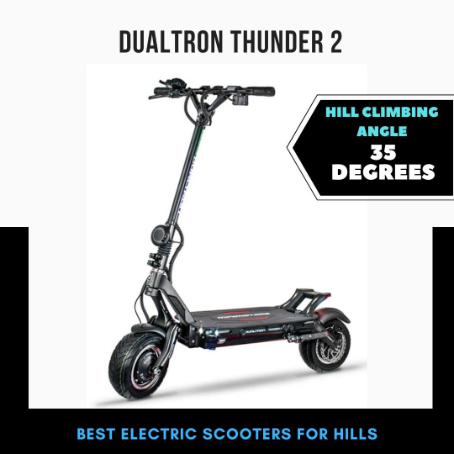
| Hill Incline: 35 degrees | Motor: 2700W x2 (10.8 kW peak) | Battery: 72V 40Ah LG battery |
| Speed: 60 mph (96.7 km/h) | Range: 72 mi (115.2 km) | Max. Load: 265 lbs (120 kg) |
| Acceleration (0 to 15 mph): 2.16 seconds | Throttle: Trigger Throttle | Cruise Control: Yes |
| Charging Time: 6 to 28 hours | Dimensions (unfolded): 48.7 x 24 x 48 inches | Deck Size: 24.5 x 12.5 inches |
| Tires: 11″ x 3.5″ tubeless tires | Dimensions (folded): 48.7 x 12.6 x 21.4 inches | Ground Clearance: 7.6 inches |
| Suspension: 45-step variable rubber suspension system | Brakes: Dual Nutt hydraulic disc brakes with ABS | Drive: Front and rear wheel drive (Dual motors) |
| Weight: 104 lbs (47.3 kg) | Lights: Dual LED Headlight, Tail Light, Brake Light, Stem lighting, Turn Signals, and Bottom Mood Lights | Water Resistance: Not Rated |
| Deck-to-handlebar height: 37 inches (approx.) | App Support: No | Display: EY3 Display |
If you’re looking for a high-performance electric scooter that can dominate any road, climb any hill, and last for hours on a single charge, you might want to check out the Dualtron Thunder 2.
This beast of a machine is the successor of the original Dualtron Thunder, one of the world’s best hill-climbing electric scooters. The Thunder 2 has been upgraded with impressive features that make it even more powerful, durable, and comfortable.
Let’s start with the power. The Dualtron Thunder 2 has BLDC dual 2700W hub motors that deliver up to 10.8 kW of peak power. That means it can reach a blazing top speed of 60 mph and accelerate like a rocket, 0 to 25 mph in just 3.6 seconds, and easily conquer any hill with an incline up to 35 degrees.
And if you want even more speed, you can double-click the throttle to release the true beast and get a 1280 Watts boost. With a built-in heat-sink to keep the motors cool, you don’t have to worry about overheating or burning out.
But power is nothing without range. The Dualtron Thunder 2 has a massive 72V 40Ah LG battery with LG M50T 21700 cells that gives you up to 72 miles of insane range (and around 60 miles on top performance mode).
That’s 27% more battery capacity than the original Thunder and the longest-tested among electric scooters like Kaboo Wolf Warrior 11 Pro and Wolf King GT Pro.
You can also get range of up to 100 miles under optimal conditions like lower rider’s weight, constant speed and low inclined surface.
You can ride for hours without stopping and unleash your full throttle without worrying about running out of juice.
Of course, you also need a smooth and safe ride. The Dualtron Thunder 2 has a customizable 45-step elastomeric rubber suspension system that allows you to adjust the arm length, motor shaft distance, and cartridge hardness by swapping the cartridge. You can fine-tune the suspension to suit your weight, riding style, and terrain.
The scooter also has 11″ x 3.5″ tubeless tires that are flat-resistant and grippy. And for braking, you have dual Nutt hydraulic disc brakes wth ABS that are responsive and reliable and stop your ride from 15 mph within 10 feet.
The Dualtron Thunder 2 also has excellent features that enhance comfort and convenience. It has a very spacious rubber deck which is 12.5″ wide and 24.5″ long and footrest that provide traction and stability.
The footrest also doubles as a handle for easier lifting. Besides, the footrest can easily be removed if you want more deck space.
The scooter has a new control panel with indicators, turn signals, horns, hazard lights, and an ECO mode button. However, it features the same classic display console, EY3 LCD throttle, as Wolf Warrior 11 Pro.
It also has a tail light, a brake light in the footrest, and lights in the stem, swingarm, sides of the deck, and under the deck for visibility and style. However, for better visibility at night, you need to install high-mounted aftermarket headlights.
The Dualtron Thunder 2 is not a cheap or lightweight scooter. It costs around $4300 and weighs 104 lbs. It’s not very portable or easy to store.
It also has low deck traction, compared to the original Thunder, which can be slippery when wet, and a double-click throttle that can be clunky to use. It also needs better night-riding headlights and a more robust stem clamp to prevent creaking.
But if you’re willing to overlook these drawbacks, you’ll get a world-class electric scooter that can deliver unmatched performance, range, and fun.
The Dualtron Thunder 2 is not for everyone, but for those who want to experience the ultimate thrill of riding an electric scooter, it’s hard to beat.
Other notable features:
- Speed-rated, load-rated, flat-proof air-filled tires
- Weight Carrying Capacity: 265 lbs.
- Cruise Control
- Adjustable electronic brake intensity
- Comes with a remote controller for LED light adjustment
- Equipped with 45-step adjustable rubber suspension, including five kinds of rubber cartridges for personalized suspension hardness.
- Charging Time: Standard charger: 28 hours | 2 standard chargers: 14 hours | Fast Charger: 6 hours.
Pros:
- Its Motor is separate from tire rims, making it easy-to-repair.
- Features foldable handlebars and foldable stem to increase portability.
- Reviewers loved its fantastic speed, range, built quality, comfort, adjustable suspensions, reliable brakes, and hill-climb-ability, which makes it one of the best electric scooters for going up hills.
- Aviation-grade aluminum frame and high-quality steel stem. These extraordinarily lightweight and robust materials resist corrosion, rust, and UV damage.
Cons:
- Comes with a square-wave controller, which is not as good as a sinewave controller found in its competitors like Wolf King GT Pro.
- Although it has many lights, you still need a high-mounted aftermarket headlight for better visibility at night.
- Its 104 lbs. weight makes it too heavy to lift upstairs.
- The rear Fender makes noise after a few months of use.
- It has inherited the same stem squeak issue that Minimotors should have fixed. However, you can still fix this issue by tightening the stem’s bolt and applying WD40.
- Not rated for water resistance or waterproofing.
4) NANROBOT D6+ Commuter Electric Scooter [Best Electric Scooter for Hills on Amazon]
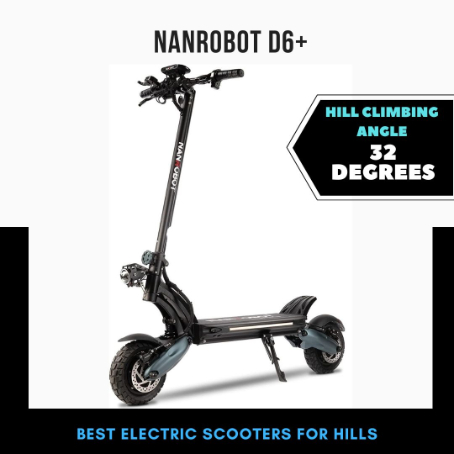
| Hill Incline: 32 degrees | Motor: 1000 x2 | Battery: 60V 22.4Ah lithium battery |
| Speed: Up to 46 mph (75 km/h) | Range: Up to 40 miles (64 km) | Max. Load: 330 lbs (150 kg) |
| Acceleration: N/A | Throttle: Trigger Throttle | Cruise Control: Yes |
| Charging Time: 10 hours with 1 charge, 5 hours with 2 chargers | Dimensions (unfolded): 52.1 x 28.8 x 52.5 inches | Deck Size: 23 x 10.5 inches (approx.) |
| Tires: 10-inch pneumatic off-road tires with inner tube | Dimensions (folded): 52.1 x 28.8 x 21.7 inches | Ground Clearance: 7 inches |
| Suspension: Front and rear adjustable hydraulic suspensions | Brakes: Front and rear hydraulic or disc brakes with EBS | Drive: Front and rear wheel drive (Dual motor) |
| Weight: 77 lbs (35 kg) | Lights: Headlights, taillight, turn-signals, and side LED deck lights | Water Resistance: IP53 |
| Deck-to-handlebar height: 39.5 inches (approx.) | App Support: No | Display: LCD display |
This beast of a machine is different from your average scooter. It’s designed to give you the ultimate off-road performance, speed, and comfort. Here’s a brief overview of why this scooter has taken its place on our list of best e-scooters for hills.
The NANROBOT D6+ features two 1000W brushless motors that can propel you up to 40 mph (65 km/h) on flat roads and up to 46 mph (75 km/h) if you upgrade to a 60V 22Ah lithium battery. That’s faster than most cars on city streets!
You can also switch between single and dual drive modes to save battery or unleash the full power of the scooter.
Speaking of battery, the NANROBOT D6+ comes with a 60V 22.4Ah lithium battery or 52V 26A LG battery that delivers a maximum range of 18.6 to 40 miles (30 to 64 km) on a single charge, depending on the battery you choose.
The battery takes 10 hours to charge with a single charger, but you can cut that time in half if you use two chargers simultaneously. The battery is also removable, so you can swap it with a spare one if you need more juice.
One of the unique selling points of the NANROBOT D6+ is its ability to climb hills easily; thanks to its dual motors and 10-inch pneumatic off-road tires, this scooter can tackle inclines up to 30 degrees.
That means you can conquer any hill in your way without breaking a sweat. The tires also provide excellent traction, stability, and shock absorption on rough surfaces, including tracks, grass, gravel, asphalt roads, muddy road, etc.
The NANROBOT D6+ also boasts a dual suspension system with two hydraulic spring shock absorbers on each wheel. This system ensures a smooth and comfortable ride even on bumpy roads. You’ll feel like you’re gliding on air as you cruise along.
Of course, safety is also essential when riding a high-speed electric scooter. That’s why the NANROBOT D6+ is UL and CE certified and comes with front and rear hydraulic or disc brakes with EBS (Electronic Brake System) that provide reliable stopping power.
You can also adjust the brake sensitivity according to your preference. The scooter also has a bright LED headlight and taillight for visibility at night.
The NANROBOT D6+ has a sturdy and durable frame that can support up to 330 lbs (150 kg) of rider’s weight.
The scooter weighs 77 lbs (35 kg), which makes it quite heavy to carry around. However, it has a foldable design that allows you to store it or transport it more easily.
The scooter also has an LCD that shows your speed, battery level, mode, and mileage.
The NANROBOT D6+ is not just a scooter. It’s an adventure machine.
It’s perfect for commuters who want to spice up their daily rides or for thrill-seekers who want to explore new places and challenges. It’s also a great way to save gas, parking, and maintenance money. Plus, it’s eco-friendly and fun!
The only drawbacks of this scooter are its high price tag and limited availability. The NANROBOT D6+ costs under $2,000, which is quite expensive compared to other electric scooters on the market.
It’s also not widely available in some countries or regions, so you might have to order it online and pay extra for shipping and taxes.
The NANROBOT D6+ is overall an impressive all-terrain electric scooter with unparalleled performance, range, and comfort. It’s ideal for hill climbing and off-roading, as well as for urban commuting and leisure.
If you’re looking for a powerful and versatile electric scooter to handle any terrain and challenge, you might want to check out the NANROBOT D6+ Commuter Electric Scooter.
Other notable features:
- Also available with a seat for comfortable long rides
- Comes with an option to choose between different batteries and brakes
- Features an Intelligent Battery Protection System to prevent the battery from over-charging, overheating, exploding, etc.
- Features a headlight, taillight, side-deck light, and four deck lights (two on the front and two on the back acting as turning signals, brake lights, or aesthetic lights)
- Comes with a horn, dedicated volt meter, LCD, and key switch.
- Dedicated buttons for turbo/eco mode, dual/single motor, as well as dedicated acceleration trigger
- Comes with an improved single Sinewave controller, instead of two in the previous version
Pros:
- Reviewers were quite impressed with its folding mechanism, which is strong, firm, and easy to operate. Besides, they also appreciated the ride’s deck, which is grippy, spacious, and with ample ground clearance.
- Testers appreciated its highly hydraulic spring shock absorbers that are highly responsive and ensure a smooth ride even on rough terrain.
- It comes with a convenient tool kit, a comprehensive user manual, and all required components for quick and easy assembly of the scooter within minutes.
- “With an option to choose between 3 different gear modes, eco and turbo mode, dual and single motor, and the acceleration trigger, gives you complete control over your ride’s range and speed”, one of the reviewers, NexiTech, said.
- Although the D6+ scooter is comparatively heavy compared to regular electric scooters, most owners didn’t find lifting it upstairs or taking it down hard.
Cons:
- The folding mechanism doesn’t have a lock that holds the handlebar with the deck for easy lifting when folded.
- The kickstand could be of better quality, so you must handle it carefully, or else it will break.
- Many buyers find it hard to assemble the fender in the first place.
5) Kaabo Mantis King GT Electric Scooter [Best Electric Scooter for Hills for Daily Commuting]
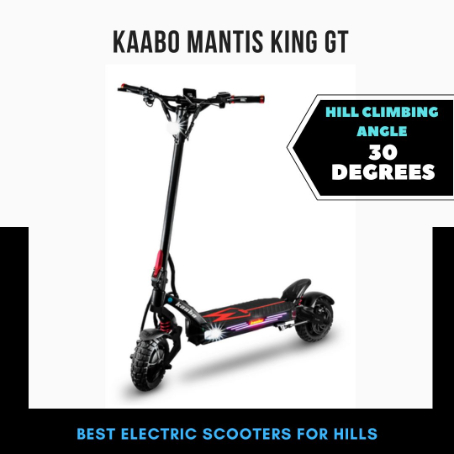
| Hill Incline: 30 degrees | Motor: 1100 x2 | Battery: Samsung Li-ion 60V/24Ah battery |
| Speed: 43.5 mph (70 km/h) | Range: 56 miles (90 km) | Max. Load: 265 lbs (120 kg) |
| Acceleration: 1.9 seconds | Throttle: thumb throttle | Cruise Control: Yes |
| Charging Time: 10 hours with 1 charge, 5 hours with 2 chargers | Dimensions (unfolded): 49 x 25.6 x 52.7 inches | Deck Size: 22.5 x 9 inches |
| Tires: 10″ x 3″ street/off road pneumatic tires | Dimensions (folded): 49 x 25.6 x 22.2 inches | Ground Clearance: 5.8 inches |
| Suspension: Front and rear adjustable hydraulic suspension | Brakes: Full oil hydraulic brakes +EABS | Drive: Front and rear wheel drive (Dual motor) |
| Weight: 73 lbs (33.2 kg) | Lights: Headlight, taillight, turn signals, and side deck lights | Water Resistance: IPX5 |
| Deck-to-handlebar height: 40 inches (approx.) | App Support: No | Display: Multifunction TFT display |
If you love Kaboo electric scooters, like Wolf GT Pro and Warrior 11 Pro, that can handle any terrain, climb steep hills, and deliver thrilling speed and range, you should check out the Kaabo Mantis King GT too.
This is the latest and most versatile and powerful model from the Kaabo Mantis series, and it has some impressive features that make it stand out from the crowd. It is perfect for regular commuting, off-roading, and playing even on elevated terrains.
On top of that, this model is comparatively cheaper than the Kaboo scooter we have discussed above.
Here’s a brief overview of what this beast can do for you.
The Kaabo Mantis King GT has upgraded from dual 1000W motors to dual 1100W motors that produce over 4000W of peak power. This means you can reach a top speed of 70 km/h (43.5 mph) and accelerate smoothly with the help of the sine wave controllers.
You can also switch between Eco and Turbo modes and Single and Dual drive modes to adjust the power and efficiency according to your needs.
This beast can easily conquer hill with incline up to 30 degrees or 61%, while according to the testers, it takes around 7.5 seconds to cover 200 feet up hill with 10% hill grade. This test proves that this scooter a slightly behind the bigger Kaboo Wolf King GT in terms of hill climbing performance.
The battery is another highlight of this scooter. It has a Samsung Li-ion 60V/24Ah battery that can give you up to 90 km (56 miles) of range on a single charge. You can also charge it faster with two ports and two chargers, reducing the charging time from 10 to 5 hours.
The ride comfort and safety are also top-notch on this scooter. It has 10-inch by 3 inches pneumatic tires that absorb shocks and provide traction on different surfaces.
These tires are an upgrade from previous Mantis versions that came in 10 inches by 2.5 inches sizes.
On top of that, these tires feature a hybrid design that offers the same performance on the street and off-road without having to swap them.
It also has adjustable hydraulic suspension on both front and rear wheels, giving you a smooth and stable ride, with an option to adjust its hardness per your riding needs.
The brakes are also hydraulic disc brakes with eABS function and battery regeneration, ensuring you can stop quickly and safely. It covers around 2.9 meters to fully stop from 15 mph of speed, which is quite exceptional among the scooters in this price range.
The Kaabo Mantis King GT also has some nice design touches that enhance its appearance and functionality.
It has a new multifunction TFT display that shows you all the essential stats and settings, such as speed, battery level, cruise control, password-protected digital lock, and performance controls.
This display is also an upgrade from the EY3 LCD throttle displays that previous Mantis versions offer.
Mantis King GT features LED lights on the front, rear, and sides and turn signals for better visibility and safety. Double protection and quick folding/unfolding also improve the folding mechanism.
The Kaabo Mantis King GT has its drawbacks, however. It is still a heavy scooter at 33 kg (74 lbs), which might make it hard to carry or store.
It is also not very cheap, costing around $2,200. And it might not be legal to ride in some areas due to its high speed and power.
Overall, the Kaabo Mantis King GT is a high-performance electric scooter that offers a lot of fun and excitement for riders who want to explore different terrains and challenge themselves.
It has a powerful motor, a long-lasting battery, a comfortable suspension, a reliable braking system, and a sleek design. It is only for some, though, as it is heavy, expensive, and potentially illegal in some places.
If you’re interested in this scooter, make sure you do your research and follow the local laws and regulations before buying one.
Other notable features:
- Dual 30A sinewave controllers
- This beast has hybrid off-road tires, so you don’t have to have separate tires for street riding and off-roading.
- Handlebar Width: 26 inches
- Deck Width: almost 9 inches
- Deck length: 22.5 inches
- Max. Rider’s Weight: 265 lbs (120 kgs)
- Features dual 3-pin charger ports that prevent cable arcing.
- It has an upgraded IPX5 water-resistance rating, making it much better than previous versions.
Pros:
- Reviewer, Freshly Charged, loved this scooter, especially the bigger sinewave controllers, the best color display, aesthetically appealing, best-locking mechanism, fantastic speed, range, and driving comfort. They also tested the scooter for its speed and range and got 46 mph top speed and 56 miles of range on a single charge. Besides, they also confirmed that the stats on display are accurate.
- Testers had no problem with its thumb throttle and loved its nice and smooth acceleration and throttle response at low speeds.
Cons:
- Testers were a bit disappointed with the rear fender, which slapped the tire when on a bumpy road.
- Riders felt unpleasant about its display with zero memory to save user settings after the scooter is powered off. They must set it all from default settings whenever they turn on the scooter.
- Owners claimed that the battery status wasn’t correct on display. Besides, they didn’t find the headlight bright enough for easy riding in the dark.
6) UberScoot 1600W Electric Scooter [Best e-Scooter for Hills with Seat]
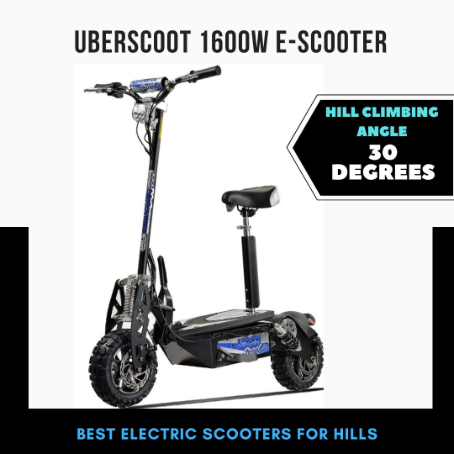
| Hill Incline: 30 degrees | Motor: 1600 W | Battery: 12V, 12AH (48 volt system) Sealed Lead Acid Batteries |
| Speed: 30 mph (48 km/h) | Range: 12 miles (19.3 km) | Max. Load: 265 lbs (120 kg) |
| Acceleration (0 to 15 mph): 5 seconds | Throttle: twist throttle | Cruise Control: No |
| Charging Time: 6 to 8 hours | Dimensions (unfolded): 49 x 25 x 43 inches | Deck Size: N/A |
| Tires: 11-inch pneumatic knobby tires | Dimensions (folded): 46 x 25 x 21 inches | Ground Clearance: N/A |
| Suspension: front “Cam-Link” suspension & adjustable rear twin-shock suspension system | Brakes: Front and rear disc brakes | Drive: Chain driven rear wheel drive (Single motor) |
| Weight: 117 lbs (53 kg) | Lights: Front and rear lights | Water Resistance: Not stated |
| Deck-to-handlebar height: 35 inches | App Support: No | Display: No |
If you’re looking for a powerful, fast, versatile, and best electric scooter for hills under $1000 that can handle any terrain, you might want to check out the UberScoot electric scooter.
This is not your average scooter. It’s a beast that can reach speeds of over 20 mph and travel up to 12 miles on a single charge.
And if you need more range, you can activate the economy mode, which reduces the speed and acceleration to save battery life.
On the other hand, you have removed the speed limit wire to increase the speed to 30 mph, but it will reduce the range significantly.
The UberScoot is designed with high-quality materials and features that make it stand out from the crowd. It has a sturdy steel frame, a durable ABS plastic body, and a rear mudguard to protect you from dirt and debris.
It also has BMX-style handlebars, front and rear disc brakes, a key ignition, a headlight, and a tail light for safety and convenience. And if you want to ride with more comfort, you can attach the quick-release seat that comes with the scooter.
But what makes this scooter really special is its ability to climb hills with ease. Thanks to its powerful 1600-watt brushless motor and large 11-inch pneumatic knobby tires, the UberScoot can tackle any slope up to 30 degrees incline without breaking a sweat.
Whether you’re riding on pavement, grass, gravel, or dirt, this scooter will give you a smooth and stable ride. And if you need to store or transport it, you can simply fold it with one touch using the advanced ‘Posi Lock’ system.
UberScoot is not for everyone, though. It’s a heavy scooter that weighs 117 lbs, so it’s not easy to carry around. Besides, it has an average range of 12 miles, which may not be enough for some users.
This hill-climbing scooter costs around $800 to $900, depending on where you buy it. Compared to other dual-motor scooters, it is cheap and offers excellent value for money.
So if you’re looking for an electric scooter that can handle any challenge, the UberScoot e-Scooter might be the one for you.
It’s fast, powerful, versatile, and comfortable. It’s an affordable hill-climbing machine that makes you feel like you are riding a mini motorcycle.
Just make sure you wear a helmet and follow the traffic rules when you’re on the road.
Other notable features:
- Features four 12V, 12AH (48 volt system) Sealed Lead Acid Batteries
- Robust reinforced Frame with a superior design, and quality welding and quality steel
- Front “Cam-Link” Suspension and rear adjustable twin-shock suspension system
Pros:
- Most reviewers confirmed that it is one of the best electric scooters for hills in a given price range due to its powerful motor, hill-climbing capabilities, high-grip tires, smooth suspension, and reliable disc brakes.
- Compared to other scooters mentioned in this list, Uberscoot has a less charging time of 6 to 8 hours, which might be convenient for most users.
- Testers were amazed to see how this ride can tackle inclines up to 30 degrees with ease with just a single but powerful motor.
- 75% of the buyers were overall satisfied with the scooter’s performance on both streets and off-roads.
Cons:
- Reviewers confirmed that this ride could achieve the advertised range and speed. However, they were expecting more range from a machine like this, which only gives 7 to 8 miles on turbo mode and 10 to 12 miles on eco mode.
- This ride is equipped with Four 12V/12AH = 48V Sealed Lead Acid (SLA) batteries, which riders preferred to upgrade to lithium-ion batteries.
- It doesn’t have a proper display console featuring a speedometer, odometer, and other details. It does have a battery meter on its handlebar.
- Reviewers were unsatisfied with the seat that swirls while riding.
7) Segway SuperScooter GT2 Electric Scooter [Smartest Electric Scooter for Hill Climbing]
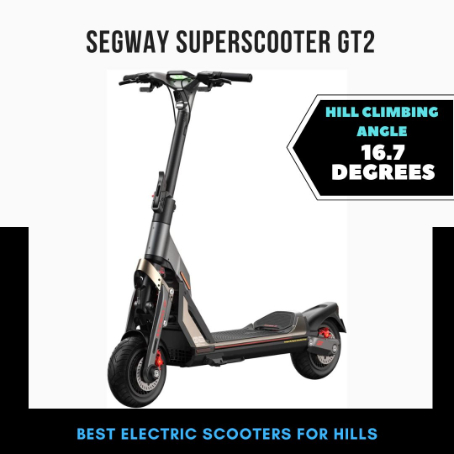
| Hill Incline: 16.7 degrees | Motor: 3000W x2 | Battery: 1512Wh, 52V high-performance battery |
| Speed: 43.5 mph (70 km/h) | Range: 55.9 miles (90 km) | Max. Load: 331 lb. (150 kg) |
| Acceleration (0 to 15 mph): 2.1 seconds | Throttle: twist throttle | Cruise Control: Yes |
| Charging Time: 16 hours with 1 charge, 8 hours with 2 chargers | Dimensions (unfolded): 58.5 x 25.8 x 51.5 inches | Deck Size: 27 x 9.5 inches |
| Tires: 11-inch anti-puncture tubeless tires | Dimensions (folded): 58.5 x 25.8 x 33.9 inches | Ground Clearance: 5.5 inches |
| Suspension: front and rear hydraulic shock absorbers | Brakes: Front and rear hydraulic disc brakes with EBS | Drive: Front and rear wheel drive (Dual motors) |
| Weight: 117 lbs (53 kg) | Lights: LED headlight, LED daylight, and front and rear turn lights | Water Resistance: IPX4 |
| Deck-to-handlebar height: 43.25 inches (approx.) | App Support: Yes | Display: Transparent PMOLED display |
Segway is a brand that has made a name for itself in the world of electric scooters, and the Segway SuperScooter GT2 Electric Scooter is a perfect example of why.
This scooter is designed for those who crave speed and performance, and it can handle any terrain or challenge that comes its way.
If you’re looking for a thrilling riding experience that feels like driving a supercar on two wheels, then the Segway SuperScooter GT2 is perfect. This scooter is not your average electric scooter – it’s a super scooter that combines speed, power, and comfort in a sleek and sturdy design.
With a 6000W two-wheel-drive air-cooled hub motor, the SuperScooter GT2 can reach a top speed of 43.5 mph and accelerate from 0 to 30 mph in just 3.9 seconds.
It also has a 1512Wh 52V high-performance battery that can deliver a range of up to 55.9 miles on a single charge, with a heat flux multi-layer cooling system that prevents overheating in extreme conditions.
The scooter’s transparent PMOLED display is the world’s first of its kind and shows your speed, motor power, battery life, range, drive mode, lighting, and STDC (Segway Dynamic Traction Control System).
It also has four speed modes: Eco, Standard, Sport, and Boost, with Boost mode providing an extra burst of speed when needed.
The Segway SuperScooter GT2 is also designed for comfort and stability. It has a double wishbone suspension structure in the front and a trailing arm suspension structure in the rear, both with hydraulic shocks that can be adjusted to 15 levels of damping.
The scooter’s 11-inch anti-puncture tubeless tires offer excellent grip and traction, and its front and rear hydraulic disc brakes with EBS (Electronic Brake System) provide solid stopping power and safety.
One of the unique selling points of the Segway SuperScooter GT2 is its ability to climb hills with ease. Thanks to its powerful motor, large battery, and SDTC system, this scooter can handle inclines up to 16.7 degrees.
This makes it perfect for exploring new places and enjoying scenic views without worrying about losing speed or control.
However, the Segway SuperScooter GT2 has some drawbacks you should consider before buying it. It’s expensive, heavy, and not very portable.
You’ll need ample space to store or transport it, and it could be more eco-friendly since you’ll have to charge it frequently and use electricity.
Overall, the Segway SuperScooter GT2 Electric Scooter is a perfect choice for those who want to experience the ultimate thrill of riding a supercar on two wheels.
It’s a scooter that offers speed, power, and comfort in a sleek and sturdy design, and it’s perfect for those willing to pay for quality and performance.
So, if you’re ready to catch the wind with Segway, don’t hesitate to get your SuperScooter GT2 Electric Scooter today.
However, you can also consider Wolf King GT Pro for a more extended range and higher top speed but lesser ride quality and stability, Burn E-2 Max for better hill climbing and acceleration but a higher price, and Dualtron Thunder 2 for a better range, and acceleration but less comfortable ride quality.
Other notable features:
- Comes with a rider weight capacity of 330 lbs.
- IPX4 water-resistance rating.
- Built-in dual charging ports for faster charging.
- Integrated walk mode that assists you in riding the scooter at a slow speed, back to the power source when the battery is dead.
Pros:
- Many reviewers loved its one-of-its-kind transparent display, which is highly aesthetically appealing and futuristic and much easier to read even in bright sunlight.
- Its handlebar has various mode buttons that let you control most of its features with just a thumb push.
- This scooter has a unique feature you can enable through its app, allowing you to use brakes and throttle simultaneously.
- A reliable reviewer, Rider Guide, loved the ride’s quality, including its futuristic and sturdy design, well-equipped handlebar, charger protective covers, flat-proof tubeless tires, and highly responsive twist throttle. Besides, they also performed several performance tests on this ride and deduced that it could accelerate from 0 to 30 mph in 4.1 seconds, while its top speed recorded was 41.8 mph. Moreover, on a hill-climbing test, this beast covered 200 meters on a 10% grade hill in just 6.6 seconds.
- Reviewers were surprised to see this scooter with unique looks and the best cruise control, traction control, stability, adjustable hydraulic shocks, and a reliable braking system. According to the test, this ride stopped from 15 mph to 0 in just 2.9 meters (9.4 feet).
Cons
- Unlike most electric scooters, Segway Superscoot GT2’s stem folds halfway down and doesn’t touch up the deck when folded. Moreover, this scooter is heavy, tall, and long, making it highly unportable and heavy to lift upstairs.
- Other scooters offer better top speed and range at a lower price than this Segway scooter.
8) NIU KQi3 Max Electric Scooter [Lightweight Electric Scooter for Hills]
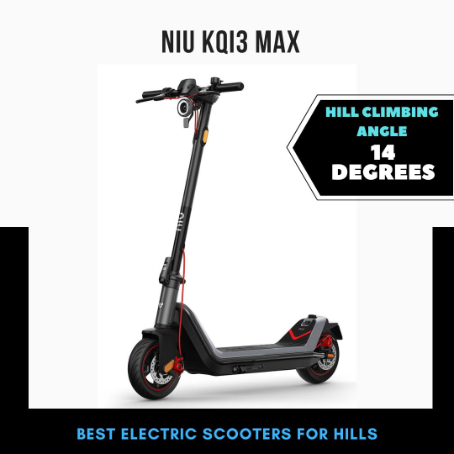
| Hill Incline: 14 degrees | Motor: 450W | Battery: 608Wh, 48V lithium ion battery |
| Speed: 23.6 mph (38 km/h) | Range: 40 miles (65 km) | Max. Load: 265 lbs (125 kgs) |
| Acceleration: 4.6 seconds | Throttle: Push thumb throttle | Cruise Control: Yes |
| Charging Time: 8 hours | Dimensions (unfolded): 44.5 x 21.3 x 47.3 inches | Deck Size: 22.4 x 6.7 inches |
| Tires: 9.5’’ rubber self-healing tubeless tires | Dimensions (folded): 44.5 x 21.3 x 19.8 inches | Ground Clearance: 3.2 inches |
| Suspension: No | Brakes: Front & rear disc brakes plus rear electric brakes | Drive: Rear wheel drive (Single motor) |
| Weight: 46.3 lbs (21 kg) | Lights: Headlight, braking lights, and side light | Water Resistance: IP54 |
| Deck-to-handlebar height: 39 inches | App Support: Yes | Display: LED display |
The KQi3 Max by NIU is an excellent choice for those who want an affordable, reliable, and efficient mode of transportation in a city with slightly steep roads or hills.
It has a range of up to 40 miles (65 km) and a top speed of 23.6 mph (38 km/h), enough to take you to college or office and back. Moreover, this commuting scooter has a 25% hill grade (equal to 14 degrees) climbing ability, making it a perfect ride if you live in an area with less steep hills.
The NIU KQi3 Max has 25% wider handlebars (47.3’’H × 21.3’’W) and a 13% wider deck (6.7W’’ × 22.4’’L) than most other electric scooters for adults, which makes it more comfortable to ride, and ensures better stability and control when riding uphill.
This hill climbing scooter also features 9.5’’ rubber self-healing tubeless tires with excellent shock absorption, which guarantees a smooth ride on rough terrain and climb hills.
It also has a triple-braking system, including front & rear disc brakes and rear electric brakes, which deliver strong braking power in dry and wet conditions.
The KQi3 Max comes with a high-powered Halo headlight, braking lights, and side lights, making it safe to ride at night. This iconic halo headlight along with built-in bell ensure you’ll be both seen and heard.
It is also worth noting that the NIU KQi3 Max Electric Scooter is built from aerospace-grade aluminum delivering high structural strength and ultimate rider confidence. While the NIU App (Bluetooth Connectivity) allows you to track your scooter’s location, battery life, and other important information.
Overall, this scooter is worth buying if you are looking for something best for daily commuting on a tight budget.
Other notable features:
- 48V 608.4Wh Battery
- Takes around 8 hours to charge
- Four modes: E-Save / Sport / Custom / Pedestrian
- IP54 Water and dust resistant
- Weight Carrying Capacity: 265 lbs (125 kgs)
- 2 Years Warranty
- Variable regenerative brakes
Pros:
- Testers and reviewers were amazed to see this scooter with a 48V battery, whereas most other scooters in this price range have a 36V battery.
- Reviewers loved to see this ride with unusual self-healing tires and a high weight carrying capacity of 265 lbs.
- Testers were overall satisfied with its water protection and appreciated its extra-grippy deck, bright headlight, bigger taillight, and ultra-bright easy-to-read display console.
- Rider Guide’s testers were overall satisfied with the scooter’s performance and build quality and found no rattle, squeaks, or wobbles.
- According to the tests performed by ESG, this ride achieved a top speed of 22 mph and accelerated from 0 to 15 mph in 4.6 seconds. And for the hill climbing test, this scooter took 14.4 seconds to cover 200 meters on a 10% grade hill, slightly better than Ninebot Max and KQi3 Pro.
- This scooter offers one of the best and most reliable brakes for a scooter under $1000. It covers only 2.8 meters (9.3 feet) for stopping, from 15 mph to 0 mph.
- It features one of the easiest and most robust folding mechanisms and a deck latch system.
Cons:
- Expensive compared to other electric scooters
- It is heavy at 46.3 pounds but still carryable upstairs.
- This ride may be stiff at full tire pressure.
- No turn signals, nor you can adjust the handlebar height.
You can also buy:
- 【All-powerful】The electric kick scooter has a rated 350W Motor with up to 700W output, delivering max speeds of up to 20mph and a 20% hill grade climbing ability. A high-capacity lithium battery powers you to ranges of up to 31 miles, on just 6 hours of charging time, while 4 riding modes meet your daily commuting, playing, scooting needs.
- 【Bigger & more comfortable】For providing a more comfortable and stable riding experience, the NIU electric scooter is taller, wider and longer than ordinary electric scooters with 25% wider handlebars (47.3’’H × 21.3’’W), a 13% wider deck (6.7W’’ × 23.6’’L), and 30% fatter tires (2.5’’) than other adult e scooters. Electric scooter for adults can easily accommodate a load of 220 lbs on 9.5’’ rubber tubeless tires with excellent shock absorption.
- 【Safer triple-braking】A front mechanical disc brake and rear dual disc and electric brake system provide much safer braking. Intelligent regenerative braking improves energy recovery efficiency by 4%, extending your riding range. Made of aerospace grade aluminium, and featuring a high-powered Halo headlight, braking lights, and a mechanical bell, the e-scooter is built to to ensure your riding safety.
- 【Smart Ride】With the NIU App (Via Bluetooth) and LED display, smart in all the best ways, allowing you to lock your NIU electric kick scooter for peace of mind, check your riding statistics or even customize your speed and cruise control.
- 【NIU Assurance】All NIU electric scooters have received UL certification. Additionally, NIU provides a 2-year warranty to ensure your peace of mind. (For accessories, consumable parts, and local after-sales service the warranty may differ. Please refer to the updated warranty and user manual on the product page.)
9) Segway Ninebot MAX Electric Kick Scooter [Portable Electric Scooter for Hills]
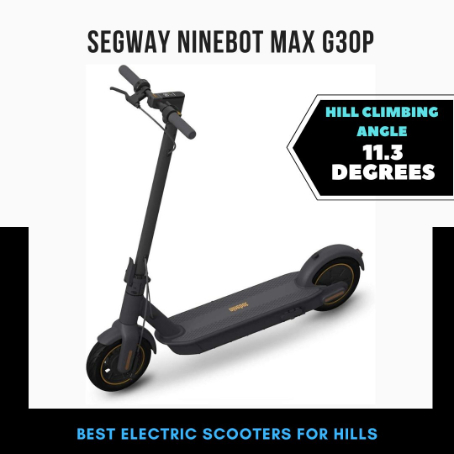
| Hill Incline: 11.3 degrees | Motor: 350 W | Battery: 36V, 551 Wh, lithium-ion battery |
| Speed: 18.6 mph (30 km/h) | Range: 40.4 miles (65 km) | Max. Load: 265 lbs (125 kgs) |
| Acceleration (0 to 15 mph): 6 seconds | Throttle: Push button throttle | Cruise Control: Yes |
| Charging Time: 6 hours | Dimensions (unfolded): 45.9 × 18.6 × 47.4 inches | Deck Size: 19.8 x 6.8 inches |
| Tires: 10” self-healing tubeless tires | Dimensions (folded): 45.9 × 18.6 × 21.0 inches | Ground Clearance: 3 inches |
| Suspension: No | Brakes: Mechanical front drum brake and regenerative electric back brake | Drive: Rear wheel drive (single motor) |
| Weight: 41.2 lbs (18.7 kg) | Lights: Headlight and taillight | Water Resistance: IPX5 |
| Deck-to-handlebar height: 40.7 inches | App Support: Yes | Display: LED display |
Ninebot Max G30P by Segway is one of the most versatile and popular electric scooters available. This scooter is designed to be the most sturdy and durable electric scooter yet, with a range of features that make it stand out from the crowd.
First off, let’s talk about the specs. This e-scooter is powered by a 350-watt motor, which allows it to reach a top speed of 18.6 mph (30 km/h). It’s got a range of up to 40.4 miles (65 km) on a single charge, thanks to its 36V 551 Wh battery.
And it can handle hills with ease, thanks to its 10-inch pneumatic tires and powerful motor.
Now, let’s talk about what sets this scooter apart. One of its unique selling points is its hill-climbing ability. The Segway Ninebot MAX is specifically designed to handle hills with a gradient of up to 20 degrees.
If you live in a hilly area or plan to use your scooter for commuting, this is an excellent option for you.
But that’s not all that’s great about this scooter. It’s also incredibly comfortable to ride, thanks to its large deck and shock-absorbing tires.
And it’s built with safety in mind, with a dual-braking system and bright front and rear lights for visibility. Plus, it’s durable enough to handle daily use, with a sturdy frame and IPX5 water resistance rating.
Of course, there are some potential downsides to consider as well. Some users have reported that the scooter can be a bit heavy to carry around, weighing in at 41.2 lbs (18.7 kg). However, it still weighs much less than most scooters we have discussed earlier.
And while the range is impressive, more is needed for longer commutes without recharging. Besides, this scooter lacks a suspension system, which would have been quite helpful in hill climbing and off-roading.
Overall, the Segway Ninebot MAX is a solid choice for anyone needing a reliable, high-performance electric scooter that can easily handle hills.
Whether commuting to work or cruising around your neighborhood, this scooter offers a smooth, comfortable ride that’s hard to beat. So, why not give it a try and see for yourself?
Other notable features:
- Weight carrying capacity: 220.5 lbs. (100 kg)
- 2.5w high brightness LED headlight
- Comes with a built-in charger and only requires a cable to charge
Pros:
- According to the testers, the Ninebot Max G30P required 3.4 meters to fully stop from 15 mph to 0 mph, which is quite impressive for the electric scooters in this price range.
- Only takes around 6 hours to charge, which is considerably less than most scooters we have discussed above.
- It is one of the most loved scooters among the reviews we have analyzed on numerous platforms, including Amazon, Reddit, and Quora.
Cons:
- Although this scooter features tubeless tires, testers wished it had a suspension for a smoother and comfier ride.
- Riders found this scooter a bit heavy to lift upstairs or carry around.
Explore more on Segway Ninebot Max:
- Segway Ninebot MAX G30 vs G30LP: Know The Difference
- Hiboy S2 Max vs Ninebot Max – Which One Reigns Supreme?
How to Choose an Electric Scooter for Climbing Hills?
You’ve just learned about the 9 best electric scooters for climbing hills, but how do you choose the one that suits your needs and preferences?
There are many factors to consider when buying an electric scooter for hill climbing, such as power, battery life, weight, speed, range, and safety features.
In this section, we’ll guide you through the process of choosing an electric scooter for climbing hills, so you can enjoy the thrill of riding up and down slopes without breaking a sweat.
Whether you’re looking for a commuter scooter, a recreational scooter, or a performance scooter, we’ll help you find the perfect match for your hill-climbing adventures.
Let’s get started!
Power
One of the most important factors to consider when choosing an electric scooter for hills is power. Power is the amount of energy that your electric scooter can produce and use to move. The more power your electric scooter has, the faster and smoother it can go on hills.
Power is measured in watts (W) and is determined by the type and size of the motor.
Electric scooters can have either brushed or brushless motors, hub or chain motors, and single or dual motors. Each type of motor has its own advantages and disadvantages.
- Brushed motors are cheaper and simpler than brushless motors, but they are also less efficient and more prone to wear and tear.
- Brushless motors are more expensive and complex than brushed motors, but they are also more powerful, durable, and quiet.
- Hub motors are integrated into the wheel of the electric scooter, while chain motors are attached to the frame and connected to the wheel by a chain. Hub motors are more compact and stealthy than chain motors, but they are also heavier and harder to repair.
- Chain motors are lighter and easier to maintain than hub motors, but they are also louder and less aesthetic.
- Single motors power only one wheel of the electric scooter, while dual motors power both wheels. Single motors are more economical and energy-saving than dual motors, but they are also weaker and less stable.
- Dual motors are more expensive and battery-draining than single motors, but they are also stronger and more balanced.
When it comes to power, you want an electric scooter that has enough watts to overcome the resistance and gravity of hills.
The higher the wattage, the better the performance and speed of your electric scooter on hills. However, you also need to consider your weight and the gradient of the hill. The heavier you are and the steeper the hill is, the more power you need.
As a general rule of thumb, you need at least 250W to climb a 10-degree hill, 350W to climb a 15-degree hill, and 500W to climb a 20-degree hill. Of course, these numbers may vary depending on other factors such as battery level, tire pressure, wind speed, etc.
If you want an electric scooter that can handle any hill with ease, you should look for one that has a high power rating and a dual motor system.
On the other hand, if you want an electric scooter that has a good balance between power and portability, you should look for one that has a moderate power rating and a single or dual motor system.
Torque
Another factor to consider when choosing an electric scooter for hills is torque. Torque is the amount of force that your electric scooter can apply to rotate the wheel.
The more torque your electric scooter has, the faster and smoother it can accelerate and climb hills.
Torque is measured in newton-meters (Nm) and is determined by the type and size of the controller. The controller is the device that regulates the power flow from the battery to the motor.
Electric scooters can have either single or dual controllers, depending on the number of motors they have.
Single controllers control only one motor of the electric scooter, while dual controllers control both motors.
Single controllers are cheaper and simpler than dual controllers, but they are also less responsive and efficient. Dual controllers are more expensive and complex than single controllers, but they are also more agile and powerful.
Another thing to consider when choosing a controller is the type of waveform it uses. The waveform is the shape of the electrical signal that the controller sends to the motor.
Electric scooters can have either sinewave or squarewave controllers, depending on the smoothness and noise of the signal.
- Sinewave controllers produce a smooth and continuous signal that mimics the natural curve of a sine wave. Squarewave controllers produce a choppy and abrupt signal that resembles the sharp edges of a square wave.
- Sinewave controllers are more advanced and expensive than squarewave controllers, but they are also more efficient and quiet. Squarewave controllers are more basic and cheap than sinewave controllers, but they are also more wasteful and noisy.
When it comes to torque, you want an electric scooter that has enough Nm to overcome the inertia and friction of hills. The higher the Nm, the better the acceleration and hill-climbing ability of your electric scooter.
However, you also need to consider your weight and the gradient of the hill. The heavier you are and the steeper the hill is, the more torque you need.
As a general rule of thumb, you need at least 15 Nm to climb a 10-degree hill, 20 Nm to climb a 15-degree hill, and 25 Nm to climb a 20-degree hill. Of course, these numbers may vary depending on other factors such as battery level, tire pressure, wind speed, etc.
If you want an electric scooter that can handle any hill with ease, you should look for one that has a high torque rating, a dual controller system, and a sinewave controller type.
Battery
Another factor to consider when choosing an electric scooter for hills is battery. Battery is the source of energy that your electric scooter uses to power the motor and other components.
As you ascend those challenging slopes, the motor will require a continuous supply of power. Therefore, a scooter with a sufficient battery capacity is essential to ensure consistent performance throughout your hill climbing adventures.
Battery is measured in ampere-hours (Ah) and voltage (V) and is determined by the type and size of the battery cells.
Electric scooters can usually have either lead-acid or lithium-ion batteries, depending on the quality and price of the electric scooter.
Lead-acid batteries are cheaper and more durable than lithium-ion batteries, but they are also heavier, bulkier, and less efficient. Lithium-ion batteries are more expensive and more sensitive than lead-acid batteries, but they are also lighter, smaller, and more powerful.
When it comes to battery, you want an electric scooter that has enough Ah and V to sustain the power and torque demand of hills. The higher the Ah and V, the better the range and durability of your electric scooter on hills.
However, you also need to consider your weight and the gradient of the hill. The heavier you are and the steeper the hill is, the more battery you consume.
As a general rule of thumb, you need at least 10 Ah and 36 V to travel 10 miles on flat ground, 15 Ah and 48 V to travel 15 miles on flat ground, and 20 Ah and 60 V to travel 20 miles on flat ground. Of course, these numbers may vary depending on other factors such as speed, wind, terrain, etc.
Weight
Another factor to consider when choosing an electric scooter for hills is weight. Weight is the amount of mass that your electric scooter has. The more weight your electric scooter has, the harder and slower it is to move on hills.
Weight is measured in pounds (lbs) or kilograms (kg) and is determined by the type and size of the frame.
Electric scooters can have either steel, aluminum, or carbon fiber frames, depending on the strength and price of the electric scooter.
- Steel frames are stronger and cheaper than aluminum or carbon fiber frames, but they are also heavier and rustier.
- Aluminum frames are lighter and more resistant than steel or carbon fiber frames, but they are also weaker and more expensive.
- Carbon fiber frames are the lightest and most aesthetic than steel or aluminum frames, but they are also the most fragile and costly.
When it comes to weight, you want an electric scooter that is light enough to carry and maneuver on hills, but not so light that it compromises the stability and quality of your electric scooter.
The lighter your electric scooter is, the easier and faster it is to climb hills. However, you also need to consider the power and battery of your electric scooter. The more power and battery your electric scooter has, the heavier it is.
As a general rule of thumb, you want an electric scooter that weighs between 30 and 70 lbs for hill climbing.
Anything below 30 lbs may be too weak or flimsy for hills, and anything above 70 lbs may be too bulky or cumbersome for hills.
Of course, these numbers may vary depending on your personal preference and physical ability.
Climbing Angle
Another factor to consider when choosing an electric scooter for hills is climbing angle. Climbing angle is the measure of how steep a hill is and how well your electric scooter can climb it.
The higher the climbing angle, the harder and riskier it is to climb a hill.
When it comes to climbing angle, you want an electric scooter that can handle the steepest hills that you encounter or plan to encounter.
The higher the climbing angle that your electric scooter can achieve, the better its hill-climbing performance and versatility.
However, you also need to consider the accuracy and credibility of the climbing angle information. You should always compare and verify the manufacturer-reported and user-reported climbing angles before buying an electric scooter for hills.
As a general rule of thumb, you want an electric scooter that can climb at least 10° for moderate hills, 15° for steep hills, and 20° for extremely steep hills. Of course, these numbers may vary depending on your personal preference and comfort level.
Measuring Slopes – Degrees vs Percentages
Climbing angle can be measured in either degrees (°) or percentages (%), depending on the preference and convention of the source. They both are different ways of expressing the same concept, but they are not interchangeable.
- Degrees are the units of angle measurement that are based on a circle. A circle has 360°, and each degree is divided into 60 minutes and each minute is divided into 60 seconds. Degrees are used to measure the angle between two lines or planes, such as the slope of a hill and the horizontal ground.
- Percentages are the units of ratio measurement that are based on a fraction. A fraction has a numerator and a denominator, and a percentage is the fraction multiplied by 100. Percentages are used to measure the proportion or rate of change of one quantity relative to another, such as the vertical rise of a hill and the horizontal run of a hill.
To convert degrees to percentages, you need to use the tangent function.
The tangent function is a mathematical operation that relates the opposite side and the adjacent side of a right triangle.
The formula for converting degrees to percentages is:
Percentage = tan(degrees) x 100
For example, if a hill has a 10° slope, the percentage is:
Percentage = tan(10) x 100 Percentage = 0.176 x 100 Percentage = 17.6%
To convert percentages to degrees, you need to use the inverse tangent function.
The inverse tangent function is a mathematical operation that reverses the tangent function and gives the angle from the opposite side and the adjacent side of a right triangle. The formula for converting percentages to degrees is:
Degrees = tan^-1(percentage/100)
For example, if a hill has a 20% slope, the degrees are:
Degrees = tan^-1(20/100) Degrees = tan^-1(0.2) Degrees = 11.31°
If you don’t have time to convert, you can also refer to the following diagram by trailism, which pretty much sums up everything:
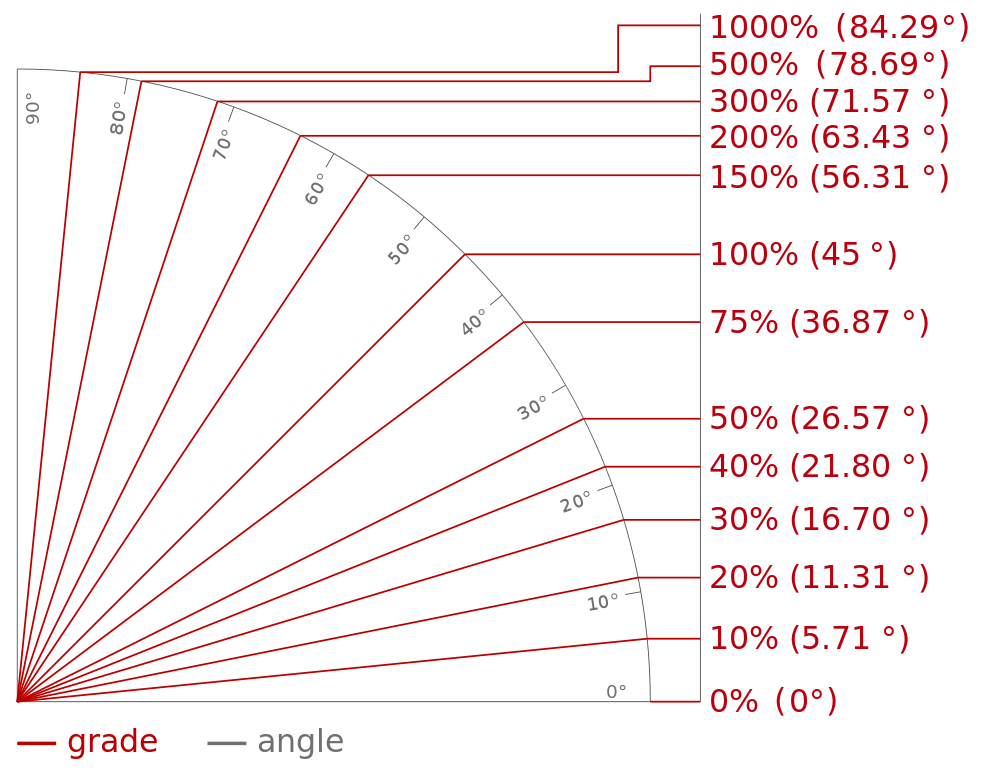
Manufacturer-reported or user-reported climbing angles
Electric scooters can have either manufacturer-reported or user-reported climbing angles, depending on the source and reliability of the information.
Manufacturer-reported climbing angles are the ones that the electric scooter brands claim their products can achieve. User-reported climbing angles are the ones that the actual users of the electric scooters report based on their personal experience.
Manufacturer-reported climbing angles are usually higher and more optimistic than user-reported climbing angles, because they are based on ideal conditions and assumptions.
For example, they may assume that the rider is lightweight, the battery is fully charged, the tires are properly inflated, the wind is favorable, etc.
User-reported climbing angles are usually lower and more realistic than manufacturer-reported climbing angles, because they are based on real-world situations and variables. For example, they may account for the rider’s weight, the battery level, the tire pressure, the wind speed, etc.
Tires
Next factor to ponder upon when choosing an electric scooter for hills is tires. Tires are the parts of your electric scooter that make contact with the ground and provide traction and stability. The type and size of your tires affect how well your electric scooter can grip and climb hills.
Tires can be either pneumatic or solid, depending on the material and structure of the tire.
Pneumatic tires are filled with air and have a rubber outer layer, while solid tires are made of solid rubber or foam and have no air inside.
Pneumatic tires are more comfortable and shock-absorbing than solid tires, but they are also more prone to punctures and flats. Solid tires are more durable and maintenance-free than pneumatic tires, but they are also harder and less flexible.
Tires can also vary in size, width, and tread, depending on the design and purpose of the tire.
- Larger tires have more surface area and can roll over obstacles easier than smaller tires.
- Wider tires have more contact area and can provide more stability and balance than narrower tires.
- Treaded tires have grooves and patterns that can enhance grip and traction on different terrains than smooth tires.
When it comes to tires, you want an electric scooter that has the right type and size of tires for your hill-climbing needs. The type and size of tires that you need depend on the steepness and surface of the hills that you encounter or plan to encounter.
As a general rule of thumb,
- You want pneumatic tires for hills that are steep and rough, as they can absorb shocks and bumps better than solid tires.
- You want solid tires for hills that are gentle and smooth, as they can last longer and require less maintenance than pneumatic tires.
- You also want larger and wider tires for hills that are steep and rough, as they can roll over obstacles and provide more stability and balance than smaller and narrower tires.
- You want smaller and narrower tires for hills that are gentle and smooth, as they can reduce rolling resistance and increase speed than larger and wider tires.
- You also want treaded tires for hills that are steep and rough, as they can enhance grip and traction on different terrains than smooth tires.
- You want smooth tires for hills that are gentle and smooth, as they can reduce friction and noise than treaded tires.
Suspension
Suspension is the system of springs and dampers that connects the frame and the wheels of your electric scooter. The purpose of suspension is to reduce the impact and vibration of the road and improve the ride quality and comfort of your electric scooter.
Suspension can be either mechanical or hydraulic, depending on the type and mechanism of the springs and dampers.
Mechanical suspension uses metal springs and rubber bushings to absorb shocks and vibrations, while hydraulic suspension uses fluid-filled cylinders and valves to control shocks and vibrations.
- Mechanical suspension is cheaper and simpler than hydraulic suspension, but it is also less adjustable and responsive.
- Hydraulic suspension is more expensive and complex than mechanical suspension, but it is also more customizable and adaptive.
Suspension can also vary in location, number, and design, depending on the placement and configuration of the springs and dampers.
Electric scooters can have either front, rear, or dual suspension, depending on whether the springs and dampers are attached to the front wheel, the rear wheel, or both wheels.
- Front suspension is more common and essential than rear suspension, as it can reduce the impact and vibration of the front wheel and improve the steering and handling of your electric scooter.
- Rear suspension is less common and optional than front suspension, as it can reduce the impact and vibration of the rear wheel and improve the stability and balance of your electric scooter.
- Dual suspension is the best and most desirable than front or rear suspension, as it can reduce the impact and vibration of both wheels and improve the overall ride quality and comfort of your electric scooter.
Electric scooters can also have either single or dual shocks per wheel, depending on whether there is one or two springs and dampers per wheel.
- Single shocks are more compact and lightweight than dual shocks, but they are also weaker and less effective.
- Dual shocks are more robust and powerful than single shocks, but they are also bulkier and heavier.
Electric scooters can also have either spring or swingarm suspension design, depending on whether the springs and dampers are mounted vertically or horizontally.
- Spring suspension design has vertical springs and dampers that are attached to the frame and the wheel axle. It is more traditional and straightforward than swingarm suspension design, but it is also less flexible and versatile.
- Swingarm suspension design has horizontal springs and dampers that are attached to the frame and a pivoting arm that connects to the wheel. It is more modern and innovative than spring suspension design, but it is also more complicated and expensive.
Another thing to mention about suspension is the adjustability that some high-end electric scooters offer.
Adjustability is the ability to change the stiffness and height of the suspension according to your preference and riding conditions. The more adjustable your suspension is, the more customizable and adaptable your electric scooter is.
Adjustable suspension system is usually manual, and requires you to use tools and knobs to adjust the suspension manually.
When it comes to suspension, you want an electric scooter that has the right type and amount of suspension for your hill-climbing needs. The type and amount of suspension that you need depend on the steepness and roughness of the hills that you encounter or plan to encounter.
As a general rule of thumb,
- You want hydraulic, front and rear, dual shocks, and swingarm suspension for hills that are steep and rough, as they can provide the best shock absorption and vibration reduction for your electric scooter.
- You want mechanical, front, single shock, and spring suspension for hills that are gentle and smooth, as they can provide adequate shock absorption and vibration reduction for your electric scooter.
Design and Safety
Safety and design are the set of features and components that protect you and your electric scooter from accidents and injuries. The better the safety design of your electric scooter, the safer and more confident you can ride on hills.
Safety design can include various elements, including overall design such as frame, stem, handlebar, folding mechanism, as well as brakes, lights, reflectors, horns, bells, etc.
Each element has its own function and importance for ensuring your safety and visibility on hills.
Brakes
Brakes are the devices that slow down or stop your electric scooter when you apply pressure on the brake lever or pedal.
Brakes are essential for controlling your speed and avoiding collisions on hills.
Electric scooters can have either mechanical or electronic brakes, depending on the type and mechanism of the braking system. (We will be discussing it separately ahead!)
Lights and Reflectors
Lights and reflectors are the devices that emit or reflect light and make you and your electric scooter visible to other road users.
These devices are important for ensuring your safety and visibility on hills, especially at night or in low-light conditions.
Electric scooters can have either built-in or external lights and reflectors, depending on whether they are integrated into the electric scooter or attached separately.
Built-in lights and reflectors are more convenient and aesthetic than external lights and reflectors, but they are also more limited and dependent on the battery level.
External lights and reflectors are more versatile and independent than built-in lights and reflectors, but they are also more cumbersome and require extra batteries.
Electric scooters can also have either front, rear, or side lights and reflectors, depending on where they are placed on the electric scooter.
- Front lights (headlights) and reflectors are used to illuminate the road ahead and make you visible to oncoming traffic.
- Rear lights and reflectors, such as brake lights and turn signals, are used to indicate your position and direction to following traffic.
- Side lights and reflectors are used to enhance the aesthetic appeal and your visibility from different angles.
When it comes to lights and reflectors, you want an electric scooter that has enough lights and reflectors for your hill-climbing needs. The amount of lights and reflectors that you need depend on the darkness and traffic of the hills that you encounter or plan to encounter.
As a general rule of thumb, you want built-in, front, rear, and side lights and reflectors for hills that are dark and busy, as they can provide the best visibility and safety for your electric scooter.
Horn and Bells
Horns and bells are the devices that produce sound and alert other road users of your presence and intention. Horns and bells are useful for ensuring your safety and communication on hills, especially in crowded or noisy areas.
Electric scooters can have either built-in or (after-market) external horns and bells, depending on whether they are integrated into the electric scooter or attached separately.
Built-in horns and bells are more convenient and aesthetic than external horns and bells, but they are also more limited and dependent on the battery level. After-market external horns and bells are more versatile and independent than built-in horns and bells, but they are also more cumbersome and require extra batteries.
Therefore, you must prefer electric scooter with built-in, electric horns and bells, as they can provide adequate sound and alert for your electric scooter.
Built-Quality
Another thing to consider about safety design is the overall electric scooter’s design that should be well-designed and robust enough to withstand heavy rider’s weight and the challenges that electric scooter faces while hill climbing.
The overall electric scooter’s design includes the frame, the deck, the handlebars, the stem, and the folding mechanism of your electric scooter.
- The frame is the main structure that supports and connects all the parts of your electric scooter. It should be made of strong and durable materials, such as steel, aluminum, or carbon fiber. The frame should also be resistant to corrosion, rust, and wear and tear.
- The deck is the flat surface that you stand on when riding your electric scooter. It should be wide and long enough to accommodate your feet comfortably and securely. The deck should also have a non-slip and anti-skid coating or texture to prevent your feet from slipping off.
- The handlebars are the parts that you hold on to and steer your electric scooter. They should be ergonomic and comfortable to grip and control. The handlebars should also have brake levers, throttle controls, display screens, and other accessories that are easy to access and operate.
- The stem is the part that connects the handlebars to the front wheel of your electric scooter. It should be rigid and stable to ensure smooth and precise steering. The stem should also be adjustable in height and angle to suit your preference and posture. Besides, it must be robust enough to withstand sudden jerks while riding, or the weight that the rider applies on it while coming down the hill.
- The folding mechanism is the system that allows you to fold and unfold your electric scooter for easy storage and transport. The folding mechanism should be simple and quick to use and lock. The folding mechanism should also be secure and reliable to prevent accidental folding or unfolding while riding.
When it comes to overall electric scooter’s design, you want an electric scooter that has a well-designed and robust design for your hill-climbing needs. The quality and performance of your electric scooter depend largely on the quality and performance of its design.
As a general rule of thumb, you want a steel or aluminum frame, a wide and long deck, ergonomic and comfortable handlebars, rigid and stable stem, and simple and quick folding mechanism for hills, especially if they are steep and rough, as they can provide the best support and durability for your electric scooter.
Braking System
Brakes are one of the most important features of any electric scooter, especially if you plan to ride on hilly terrain. They not only ensure your safety, but also affect your riding comfort, performance, and maintenance.
There are mainly two types of braking systems on electric scooters: mechanical and electronic.
Mechanical brakes use physical force to create friction and slow down the scooter, while electronic brakes use electrical signals to cut off the motor power or regenerate energy.
Let’s take a look at the different types of brakes in each category, and see how they compare in terms of effectiveness, reliability, and suitability for hill climbing.
Mechanical Brakes
Mechanical brakes are easily the most suitable type for electric scooters. They provide strong and consistent braking power, regardless of the battery level or weather conditions.
They also allow you to modulate the braking force according to your needs, which is essential for smooth and safe riding on slopes.
There are three main types of mechanical brakes: disc brakes, drum brakes, and foot brakes.
1. Disc Brakes
Disc brakes are the most common and effective type of mechanical brakes found on electric scooters. They consist of a metal disc (or rotor) attached to the wheel hub, and a caliper that holds a brake pad on each side of the disc.
When you pull the brake lever, the pads squeeze the disc and create friction that slows down the wheel.
Disc brakes can be further divided into cable-controlled disc brakes, semi-hydraulic disc brakes, and hydraulic disc brakes. The difference lies in how the brake lever activates the caliper.
Cable-controlled disc brakes use a metal cable, semi-hydraulic disc brakes use a combination of cable and hydraulic oil, and hydraulic disc brakes use a fully sealed system of hoses and oil.
The advantages of disc brakes are:
- They provide excellent braking power and modulation, even at high speeds or on steep hills.
- They are resistant to heat, water, and dirt, which means they perform well in various weather and road conditions.
- They are easy to adjust and maintain, as you can replace the pads or the cable when they wear out.
The disadvantages of disc brakes are:
- They are more expensive and complex than other types of brakes.
- They are heavier and bulkier than other types of brakes, which adds to the weight and size of the scooter.
- They can make noise or squeak when they are wet or dirty.
Among the three types of disc brakes, hydraulic disc brakes are the best for hill climbing electric scooters, as they offer the most braking power and modulation, as well as the least maintenance. However, they are also the most expensive and difficult to install.
Semi-hydraulic disc brakes are a good compromise between cost and performance, while cable-controlled disc brakes are the cheapest and simplest option.
2. Drum Brakes
Drum brakes are another type of mechanical brakes that are found on some electric scooters.
They consist of a metal drum (or shell) mounted inside the wheel hub, and a pair of curved brake shoes that press against the inner surface of the drum when you pull the brake lever.
The advantages of drum brakes are:
- They provide reliable and consistent braking power, as they are not affected by heat, water, or dirt.
- They are low maintenance and durable, as they are enclosed in a protective shell that prevents wear and tear.
- They are quiet and smooth, as they do not produce noise or vibration.
The disadvantages of drum brakes are:
- They provide less braking power and modulation than disc brakes, especially at high speeds or on steep hills.
- They are heavier and more difficult to adjust than disc brakes, as they require special tools and skills.
- They can overheat and fade if used excessively, which reduces their effectiveness and safety.
Drum brakes are suitable for electric scooters that have moderate speed and power, and that are used on flat or gentle terrain. They are not recommended for hill climbing electric scooters, as they do not provide enough braking force or control for steep slopes.
3. Foot Brakes
Foot brakes are the simplest and cheapest type of mechanical brakes, but also the weakest and least effective. They consist of a plastic fender positioned above the rear wheel, which you stomp down on with your foot to create friction and slow down the scooter.
The advantages of foot brakes are:
- They are easy to operate and install, as they do not require any cables, levers, or pads.
- They are lightweight and compact, as they do not add any extra components to the scooter.
The disadvantages of foot brakes are:
- They provide very little braking power and modulation, as they depend on your foot pressure and the tire condition.
- They can damage the tire and the fender, as they cause excessive wear and tear.
- They can cause the rear wheel to lock and skid, which can be dangerous and unstable.
Foot brakes are only suitable for slow and cheap electric scooters, as they do not require much braking power or precision. They are not suitable for hill climbing electric scooters, as they do not provide enough safety or comfort for riding on slopes.
Electronic Brakes
Electronic brakes are a type of braking system that uses electrical signals to cut off the motor power or regenerate energy when you pull the brake lever. They do not create any physical friction or resistance on the wheels, which means they do not wear out or require maintenance.
However, they also do not provide much braking power or modulation, which means they are not very effective or reliable.
There are two main types of electronic brakes: regenerative brakes and electronic brakes.
1. Regenerative Brakes
Regenerative brakes are a type of electronic brakes that convert the kinetic energy of the moving scooter into electrical energy, which is then stored in the battery or used to power the motor. This reduces the speed of the scooter and extends the battery life.
The advantages of regenerative brakes are:
- They provide some braking power and modulation, as they can be adjusted to different levels of resistance.
- They are eco-friendly and efficient, as they recover energy and reduce battery consumption.
- They are maintenance-free and durable, as they do not involve any mechanical parts or friction.
The disadvantages of regenerative brakes are:
- They provide less braking power and modulation than mechanical brakes, especially at low speeds or on steep hill.
- They are dependent on the battery level and the motor power, which means they can lose effectiveness or fail when the battery is low or the motor is overloaded.
- They can cause overheating and damage to the battery or the motor, if they are used excessively or improperly.
Regenerative brakes are suitable for electric scooters that have moderate to high speed and power, and that are used on flat or gentle terrain.
They are not suitable for use solely for hill climbing electric scooters, as they do not provide enough safety or control for steep slopes.
However, using regenerative electronic brakes with mechanical hydraulic brakes is the best combo!
2. Electronic Brakes
Electronic brakes are a type of electronic brakes that simply cut off the motor power when you pull the brake lever, without recovering any energy. This reduces the speed of the scooter, but also wastes energy and reduces battery life.
The advantages of electronic brakes are:
- They provide some braking power and modulation, as they can be adjusted to different levels of sensitivity.
- They are maintenance-free and durable, as they do not involve any mechanical parts or friction.
The disadvantages of electronic brakes are:
- They provide less braking power and modulation than mechanical brakes, especially at high speeds or on steep hills.
- They are dependent on the motor power, which means they can lose effectiveness or fail when the motor is overloaded or malfunctioning.
- They can cause sudden and jerky stops, which can be uncomfortable and unsafe.
Electronic brakes are suitable for electric scooters that have low to moderate speed and power, and that are used on flat or gentle terrain. They are not suitable for use solely for hill climbing electric scooters, as they do not provide enough safety or control for steep slopes.
However, most high-end electric scooter offer electric brakes or regenerative brakes with mechanical brakes to enhance braking and safety.
Weight Carrying Capacity
Weight carrying capacity, maximum load capacity or load bearing capacity, is the maximum amount of weight that your electric scooter can support and carry. It consideration is vital for ensuring your safety and performance on hills.
Weight carrying capacity can be influenced by various factors, such as motor power, battery capacity, frame strength, tire size, etc. This capacity can be increased by upgrading and reinforcing these factors.
Load bearing capacity can also vary depending on the steepness and speed of the hills that you encounter or plan to encounter. The steeper and faster the hill, the more weight carrying capacity you need. The gentler and slower the hill, the less weight carrying capacity you need.
You want an electric scooter that has enough weight carrying capacity for your hill-climbing needs. The amount of maximum load capacity that you need depends on your own weight and the weight of any additional items that you carry on your electric scooter.
As a general rule of thumb, you want an electric scooter that has at least 20% more weight carrying capacity than your total weight. For example, if you weigh 200 lbs and carry 50 lbs of items on your electric scooter, your total weight is 250 lbs. You want an electric scooter that has at least 300 lbs of weight carrying capacity.
Portability
Portability is the ease and convenience of carrying and transporting your electric scooter. It is useful for storing and traveling with your electric scooter.
Portability can be influenced by various factors, such as weight, size, foldability, handleability, etc. It can also be improved by reducing and optimizing these factors.
- Weight is the heaviness of your electric scooter that affects its mobility and maneuverability. It is always recommended to prefer lightweight hill climbing scooter but made for robust material.
- Size is the dimension of your electric scooter that affects its compactness and space-efficiency. While choosing the an hill climbing electric scooter, you must know weather it can fit into your car’s truck or other storage space.
- Foldability is the ability of your electric scooter to fold and unfold for easy storage and transport. It is always recommended to prefer foldable scooter.
- Handleability is the ability of your electric scooter to be handled and carried by hand or other means. Not all foldable scooters are easy to handle, to choose it wisely as per for preference.
When it comes to portability, you want an electric scooter that has high portability for your hill-climbing needs. The level of portability that you need depends on how often and how far you need to carry and transport your electric scooter.
It is always recommended to select an electric scooter that has low weight, small size, high foldability, and high handleability for daily commuting in a hilly area, as they can provide the best mobility and convenience for your electric scooter.
However, electric scooter, like Kaboo Wolf King GT Pro, and Dualtron Thunder 2, that has high weight, large size, low foldability, and low handleability can be useful for steep and rough hills and for off-roading, as they can provide the best performance and durability for your electric scooter.
Waterproofing
Waterproofing is the degree and method of protecting your electric scooter from water damage. It is essential for ensuring your safety and performance on hills, especially in rainy or wet conditions.
Waterproofing can be measured by the IP rating of your electric scooter. IP rating stands for Ingress Protection rating, and it indicates how well your electric scooter can resist dust and water intrusion.
IP rating has two digits, such as IP54 or IP67. The first digit represents the dust resistance level, and the second digit represents the water resistance level.
The dust resistance level ranges from 0 to 6, with 0 being no protection and 6 being complete protection. The water resistance level ranges from 0 to 9, with 0 being no protection and 9 being high-pressure water jet protection.
The higher the IP rating, the more waterproof your electric scooter is.
When it comes to waterproofing, you want an electric scooter that has a high IP rating and/or a good waterproofing method for your hill-climbing needs. The level of waterproofing that you need depends on the weather and terrain of the hills that you encounter or plan to encounter.
As a general rule of thumb, You want an electric scooter that has at least IP54 rating for hills that are wet and rough, as they can provide better protection from water splashes, rain and mud.
Conclusion
If you are looking for the best electric scooters for hills, you have plenty of options to choose from. However, not all electric scooters are created equal when it comes to hill climbing performance.
Some factors that affect the hill climbing ability of an electric scooter are the motor power, the battery capacity, the torque, the weight, and the wheel size.
In this blog post, we have reviewed 9 of the best electric scooters for hills that you can buy this year. We have compared their features, pros, and cons, and given our honest opinion on each one of them.
Based on our analysis, we have concluded that the Kaboo Wolf King GT Pro and the Dualtron Thunder 2 Electric Scooter are among the best electric scooters for hill climbing in terms of specs.
They have powerful dual motors, large batteries, high torque, and big wheels that can handle any terrain and incline. However, they are also very heavy, bulky, and expensive, which makes them not very portable or feasible for daily commuting.
If you are looking for a more balanced option that can handle hills as well as urban roads, we recommend the Kaabo Mantis King GT Electric Scooter.
It has a dual motors that can deliver up to 2200W of power, a decent battery that can last up to 50 miles on a single charge, and a lightweight and foldable design that makes it easy to carry and store.
It also has a smooth suspension system, hydraulic brakes, and pneumatic tires that ensure a comfortable and safe ride.
We hope this blog post has helped you find the best electric scooter for hills that suits your needs and budget.
Remember to always wear a helmet and follow the traffic rules when riding an electric scooter. Happy scooting!
Read More:
- Can Electric Scooters Go Uphill?
- How to Protect Electric Scooters from Theft?
- What to Look for When Buying an Electric Scooter?
- How to Clean an Electric Scooter?


